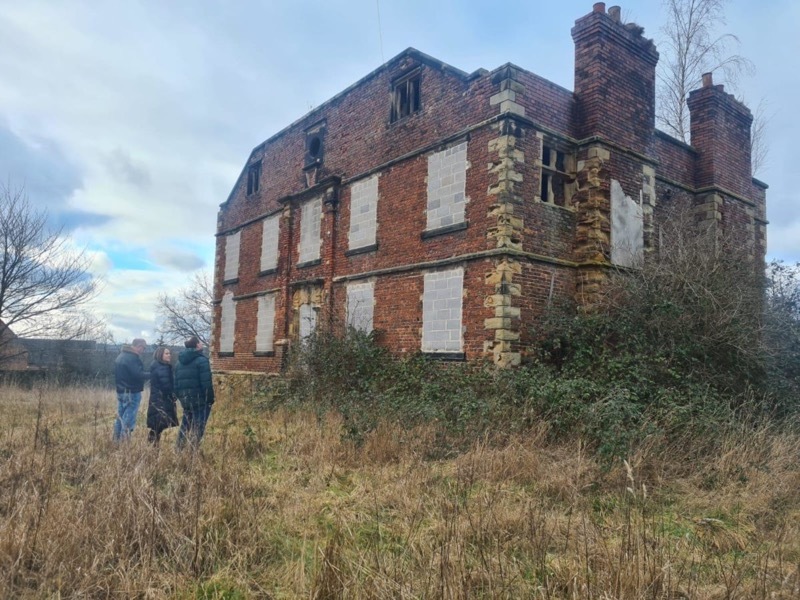MORE than a dozen historic sites in Barnsley are considered to be ‘at risk’ - including two in a ‘very bad condition’ - the Chronicle can reveal.
Historic England’s Heritage at Risk Register gives an annual snapshot of the health of England’s valued buildings and places.
The public body said the programme shines a light on historic sites most in need and has brought local people together in caring for and enjoying their heritage.
The register shows there were 13 historic sites in Barnsley listed as heritage at risk of neglect, decay or inappropriate development as of November 2023, when records were last updated.
These included five listed buildings, six monuments, one park and one conservation area.
Some of these sites include the Church of St Helen in Thurnscoe, Cannon Hall, East Gawber Hall’s colliery fanhouse and a heavy anti-aircraft gunsite in Bolton-upon-Dearne.
In total, there were 4,871 heritage buildings and sites across the country considered at risk.
While the register saw 159 new additions over the last year, 203 sites were removed for positive reasons such as repairs done or the overall management has been improved.
There was one Barnsley historic site added to the register last year, but none were removed.
Matthew McKeague, chief executive of the Architectural Heritage Fund, said: “We have worked with hundreds of community-led schemes to rescue and reuse historic buildings, including many on the at-risk register.
“These projects might be about bringing a redundant lido back into use or turning an old bank building into affordable housing or a former church into a new workspace - each is about saving a piece of vital local heritage and giving it a sustainable future use.”
Of all the buildings and sites on the register, 789 were assessed to be in a very bad condition, while the most - 1,707 were in a poor condition.
Of these, no solution was agreed for 549 in a ‘immediate risk of further rapid deterioration or loss of fabric’.
There was also no solution agreed for 1,019 sites suffering from ‘slow decay’.
In Barnsley, there were two historic sites determined to be in a very bad condition.
This included the Worsbrough conservation area, which encompasses Worsbrough Hall, Mill Bank House and St Mary’s Church.
The register states the condition is ‘very bad’ and is ‘deteriorating’.
Grade II-listed Grimethorpe Hall - which was built in 1670 for Robert Seaton and his wife Theodicia Adwick - is the other historic site on the register.
Stephanie Peacock, the MP for Barnsley East, has met with Historic England in Parliament to discuss its future and plans for the world-renowned Grimethorpe Colliery Band to take it over as a base.
Ms Peacock has been campaigning alongside local residents to restore the hall to its former glory.
She added: “It is concerning to hear that Grimethorpe Hall and Worsbrough conservation area have been placed on Historic England’s ‘at risk’ register.
“It is really important that we protect local sites like these to respect the history of the area.
“I have met with Historic England, and been in contact with local residents, about the future of Grimethorpe Hall and the possibilities for the future of the site.
“I have contacted Historic England for more information and to offer my support for the sites.”
Liz Fuller, buildings at risk officer at SAVE Britain’s Heritage, said: “It is vitally important to monitor and find new uses for historic buildings which are being neglected as they can deteriorate in condition very quickly.
“The worse the condition of the building, the more expensive it will be to bring them back into use.
“Our historic buildings are a national resource and bring character and interest to our streets.”
Historic England said around 6,800 historic sites have been rescued over the past 25 years - equivalent to around three-quarters of the entries on the original register from 1998.
Chief executive Duncan Wilson added: “Protecting our heritage is so important.
“The Heritage at Risk programme shines a light on our historic sites most in need and can help to attract funding and help.
“After a quarter of a century of the Heritage at Risk Register, we are celebrating how many places have been saved and continue to find new ways to involve local people in caring for and enjoying their heritage.”(


























